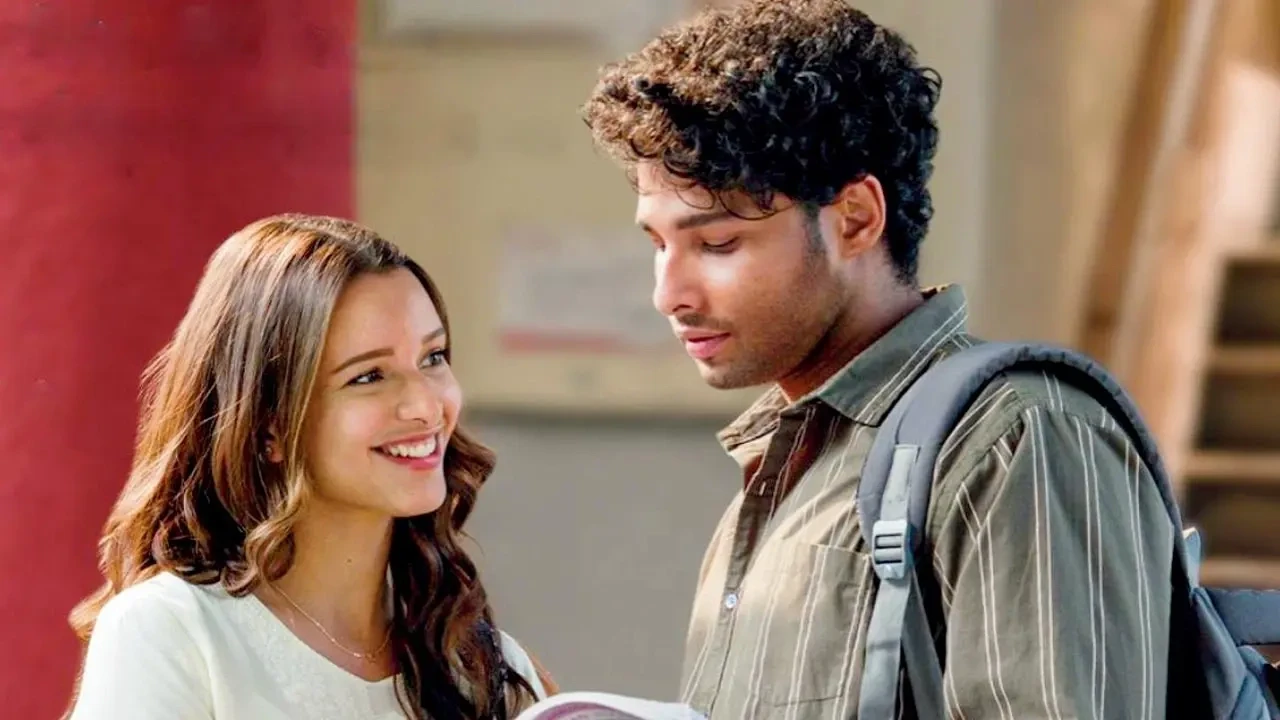ne in Dhadak 2 is when two families are in the drawing room, discussing ‘rishta’ (marriage), for the heroine’s sister, on one side.
Both families are upper-caste. Caste-sameness being, usually, the starting point for Hindu arranged marriages, anyway.
During their chat, it turns out, the boy’s family eats meat. They’re Maithil brahmins. Among whom, as with brahmins across eastern India, meat-eating is common.
“Ah, we thought you were Naramdiya Brahmins,” the girl’s side says.
Either way, given they’re still the same caste, they settle this with the joke that the bride could eat meat-gravy at the in-laws’ home!
The heroine’s surname is Bharadwaj. The hero in this film, about inter-caste love, bears the surname, Ahirwar – that he’s ashamed to reveal in a packed classroom.
I checked with ChatGPT to learn that Ahirwars belong to the “chamar caste, a Scheduled Caste (Dalit) community, particularly in Uttar Pradesh and Madhya Pradesh (MP).” Both the lead boy and girl go to the same class at a law college in MP.
, by the looks of it, is a commercial entertainer. As with its prequel, the movie’s main contribution to the mainstream is to hit us with the continuous obsession and omnipresence of caste, in all its oppression, across society.
Even as we tend to ignore/forget such facts, cocooned in more urbane surroundings, sometimes.
Which is what makes the aforementioned scene instructive. In order to purposefully reject/exterminate caste, one has to understand it, first. And Dhadkan would be dhakkan for a movie, if it sounded generic or superficial about such things.
,who debuted with the eternal tragic-romance, Laila Majnu (2018), plays the upper-caste heroine in Dhadak 2. As a role, it’s a breeze for her, and she sways beautifully in it, all the same.
Opposite her is Siddhant Chaturvedi (seemingly bronzed/tanned), with the more difficult part, of a Dalit boy, from a shanty within a city.
Low on English language skills, that’s terrible for law, he’s the son of a cross-dressing father (Vipin Sharma, who’s just as kickass in this role as he was as a transgender in Dev Patel’s Monkey Man, which, for all practical purposes, has been banned in India).
The hero’s all too aware of his supposed station in life, with every intention of staying off any kinda politics/trouble, still.
You can see through this naked vulnerability in Siddhant’s character. Even while he looks rebellious, seething with rage within. The energy bursts and retreats, almost simultaneously.
As a part, it’s polar opposite to Siddhant’s theatrical debut as MC Sher in Gully Boy (2019) – or the uber-rich, metropolitan characters in Gehraiyaan (2022), Kho Gaye Hum Kahan (2023); never mind, the action-star in the demented Yudhra (2024) – displaying a range that’s hard not to observe and applaud.
As a film, Dhadak 2 stands as his own. Must it be compared to anything else? It will be. And it should be. The film is both an anointed sequel and an official remake, after all.
Speaking of which, the first Dhadak (Janhvi Kapoor, Ishaan Khatter), quite simply for a young romance, had better music. I know this from randomly humming its title track on the way back from the supposed second part!
Also, it had a better script, that is, Nagraj Manjule’s Sairaat (2016). Too many people had seen the Marathi original (set in semi-rural Maharashtra) and I suspect, Dhadak (2018; among Rajputs in Rajasthan) got trashed for it, as a result.
That was unfair. The likes of Romeo & Juliet can be remade in any setting/context, and at any time; no?
An issue I found people discussing at Dhadak 2’s interval, though, is if the caste-based atrocities going on as openly, in a big/reputed government law college in a major Indian city, is even possible.
You could attribute some of these stray comments to caste as an urban blind spot, anyway.
That said, it’s unlikely the same chatter would revolve around Mari Selvaraj’s Pariyerum Perumal (2018; available on Prime Video), produced by PA Ranjit, that Dhadak 2 is adapted from.
I checked out that film’s geography/setting, online, switching references between village, taluka, main town, nearby – Tirunelveli, Puliankulam, Srivaikuntam, Ambasamudram, Karungalam, etc. You can tell why it feels so organic.
As against Dhadak 2 which opens with the statue of Raja Bhoj, meaning Bhopal, right away.
But the key difference between the two films is in the screenplay structure, which for the Tamil original seems instantly superior – right down to its incredibly sharp final scene, between the hero and the heroine’s dad.
There’s something about this remake that feels more methodical, instead of visceral.
In line with most mainstream movies, you can also sorta tell what happens next – that stage is set from the first scene onwards. What with a devilish hitman (Saurabh Sachdeva), on the prowl, with a sinister background score.
Be that as it may, there’s plenty to admire about this film, directed by Shazia Iqbal (production designer of Sacred Games, Lust Stories).
Besides the performances, to begin with, as a film, it never wavers from its original themes/thought (whether gender, language, or caste); seeing them all the way through.
There’s some humour when you need respite. Also, stray observations to take home.
Like the hero’s best friend, who asks him about how he made it to law school, “Quota?” For himself, he says, “Donation”. The film subtly suggesting: Isn’t lifelong privilege a quota in itself!
This is a Dharma production. Sometime back, if I recall right, they’d announced never to host press previews. I watched Dhadak 2 at a press show.
I guess a picture like this should collect critical acclaim first. As it must.
Further, if Dhadak is indeed a running film franchise, with the expressed aim of caste as the central conflict in a mainstream, young romance – also, exposing it as the debilitating social phenomenon that it is – wishing them all the more luck.
